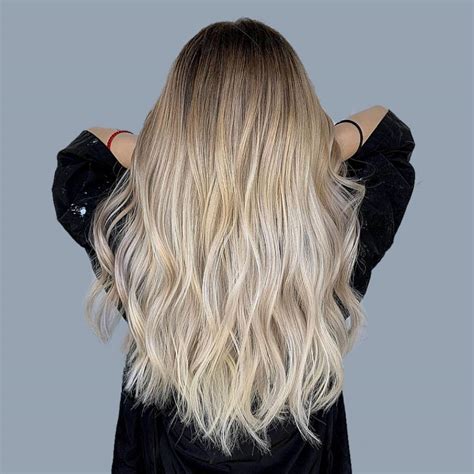Introduction
Wigs, a versatile and captivating accessory, have been adorning heads for centuries. From ancient Egypt to the modern era, they have played a multifaceted role in fashion, culture, and personal expression. This comprehensive guide delves into the fascinating world of wigs, exploring their history, types, benefits, and modern applications.

History of Wigs
The earliest known wigs date back to 3000 BC in ancient Egypt. Upper-class Egyptians shaved their heads and wore wigs made from human hair, wool, or plant fibers. Wigs were also prevalent in ancient Greece and Rome, where they symbolized wealth and status.
During the Renaissance, wigs experienced a resurgence in popularity. Elaborate wigs became fashionable in European courts, reaching their peak in the 17th and 18th centuries. These wigs often featured intricate designs and were powdered white.
Types of Wigs
Modern wigs come in a wide array of types, catering to various needs and preferences. These include:
- Full Lace Wigs: Made entirely of lace, these wigs provide a natural-looking hairline and are highly breathable.
- Lace Front Wigs: Similar to full lace wigs, but only the front is made of lace, providing a more affordable option.
- Machine-Made Wigs: Constructed using a machine, these wigs are more durable and less expensive than lace wigs.
- Synthetic Wigs: Made from artificial fibers, these wigs are heat-resistant and affordable, but can be less natural-looking than human hair wigs.
- Human Hair Wigs: Constructed from 100% human hair, these wigs offer the most natural appearance and can last longer than synthetic wigs.
Benefits of Wigs
Wigs offer numerous benefits, including:
- Hair Customization: Wigs allow individuals to change their hairstyle and color instantly without damaging their natural hair.
- Protection from Hair Damage: Wigs can protect natural hair from heat styling, chemical treatments, and environmental factors.
- Convenience: Wigs are an easy and quick way to transform one’s appearance without spending hours at the salon.
- Medical Purposes: Wigs can provide a solution for hair loss due to medical conditions such as alopecia or cancer treatments.
Modern Applications of Wigs
Beyond their traditional uses, wigs are finding innovative applications in various industries:
- Cosplay: Wigs play a crucial role in cosplay, allowing individuals to embody their favorite fictional characters.
- Entertainment: Wigs are essential for performers in theater, film, and television, enabling them to create diverse characters and convey emotions.
- Wig Entrepreneurship: The wig industry is booming, with countless opportunities for entrepreneurs to create their own wig businesses.
Table 1: Types of Wigs and Their Characteristics
| Wig Type | Construction | Cost | Natural-Look | Durability |
|---|---|---|---|---|
| Full Lace Wig | 100% lace | High | Excellent | Good |
| Lace Front Wig | Lace front, wefted back | Moderate | Good | Moderate |
| Machine-Made Wig | Machine-wefted | Low | Fair | Good |
| Synthetic Wig | Artificial fibers | Low | Fair | Excellent |
| Human Hair Wig | 100% human hair | High | Excellent | Moderate |
Table 2: Benefits of Wigs
| Benefit | Description |
|---|---|
| Hair Customization | Allows individuals to transform their hairstyle and color without damaging their natural hair. |
| Protection from Hair Damage | Protects natural hair from heat styling, chemical treatments, and environmental factors. |
| Convenience | Easy and quick way to transform one’s appearance. |
| Medical Purposes | Provides a solution for hair loss due to medical conditions. |
Table 3: Modern Applications of Wigs
| Industry | Application |
|---|---|
| Cosplay | Embodying fictional characters |
| Entertainment | Creating diverse characters and conveying emotions |
| Wig Entrepreneurship | Starting a wig business |
Table 4: Common Mistakes to Avoid When Wearing Wigs
| Mistake | Solution |
|---|---|
| Wearing a wig too tightly | Choose a wig that fits comfortably and avoid pulling it too tight. |
| Using the wrong wig care products | Use products specifically designed for wigs, such as wig shampoo and conditioner. |
| Over-styling wigs | Limit heat styling and avoid using harsh chemicals. |
| Not cleaning wigs regularly | Wash wigs monthly or as needed to maintain their hygiene and appearance. |
| Not storing wigs properly | Store wigs on a wig stand or in a box when not in use. |
FAQs
1. How do I find the right wig for my face shape?
Consider the shape of your face and choose a wig with a style that complements it. For example, round faces look best with wigs that add volume to the top, while oval faces can wear almost any style.
2. Can wigs damage my natural hair?
No, wigs do not damage natural hair if worn correctly. In fact, they can protect your natural hair from damage.
3. How often should I wash my wig?
Wash your wig every 1-2 months, or as needed, depending on how often you wear it.
4. Can I swim in a wig?
It is not recommended to swim in a wig, as the chlorine and salt in the water can damage the wig.
5. Can I wear a wig everyday?
Yes, wigs are designed to be worn repeatedly. However, it is important to give your natural hair a break from time to time.
6. How long do wigs last?
The lifespan of a wig depends on the type of wig and how well it is cared for. Synthetic wigs can last for 6-12 months, while human hair wigs can last for 1-3 years with proper maintenance.
Conclusion
Wigs have evolved from ancient adornments to versatile accessories that enhance fashion, personal expression, and well-being. With a wide range of types and applications, wigs cater to a myriad of needs and preferences. By avoiding common mistakes, maintaining proper care, and choosing a wig that complements your style, you can enjoy the transformative power of wigs for years to come.
